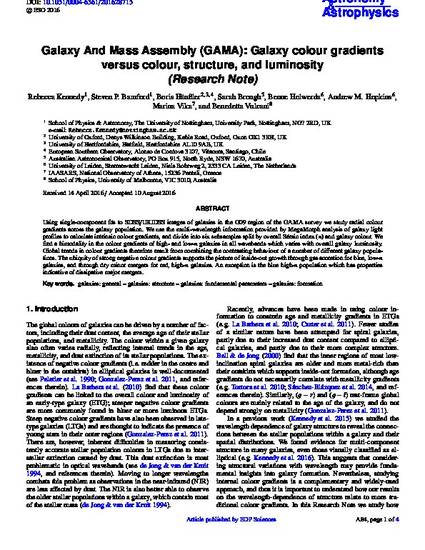
Using single-component fits to SDSS/UKIDSS images of galaxies in the G09 region of the GAMA survey we study radial colour gradients across the galaxy population. We use the multi-wavelength information provided by MegaMorph analysis of galaxy light profiles to calculate intrinsic colour gradients, and divide into six subsamples split by overall Sérsic index (n) and galaxy colour. We find a bimodality in the colour gradients of high- and low-n galaxies in all wavebands which varies with overall galaxy luminosity. Global trends in colour gradients therefore result from combining the contrasting behaviour of a number of different galaxy populations. The ubiquity of strong negative colour gradients supports the picture of inside-out growth through gas accretion for blue, low-n galaxies, and through dry minor mergers for red, high-n galaxies. An exception is the blue high-n population which has properties indicative of dissipative major mergers.
Kennedy, Rebecca, et al. "Galaxy And Mass Assembly (GAMA): Galaxy Colour Gradients Versus Colour, Structure, and Luminosity." 2016. Astronomy & Astrophysics 593: 1-4.

Reproduced with permission from Astronomy & Astrophysics, © ESO 2016
https://doi.org/10.1051/0004-6361/201628715